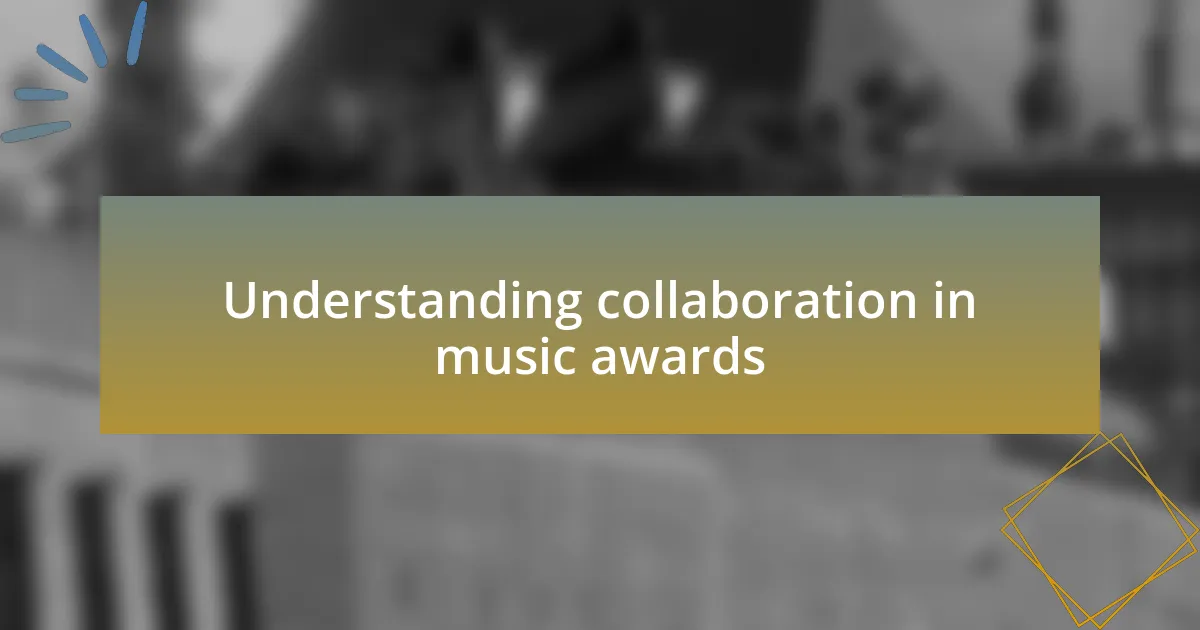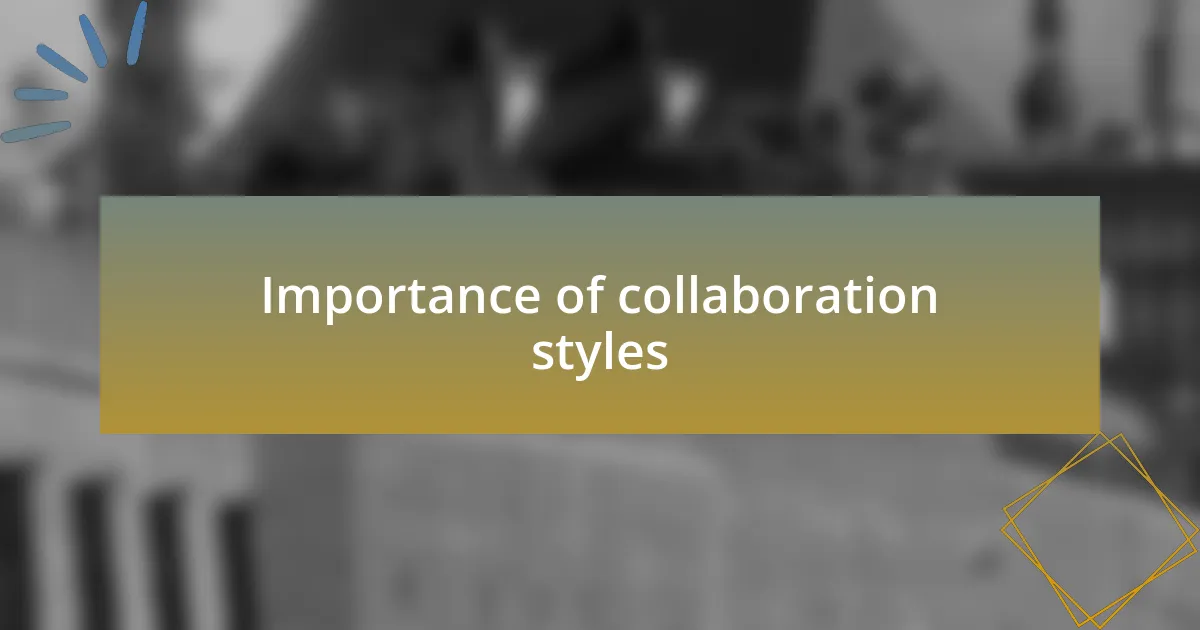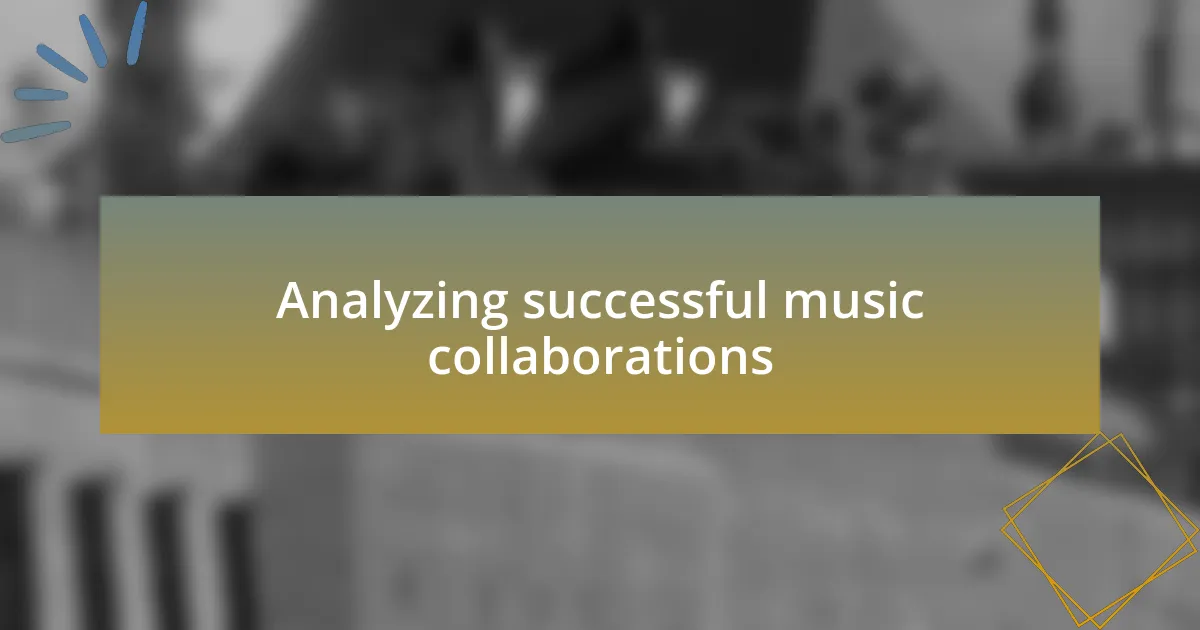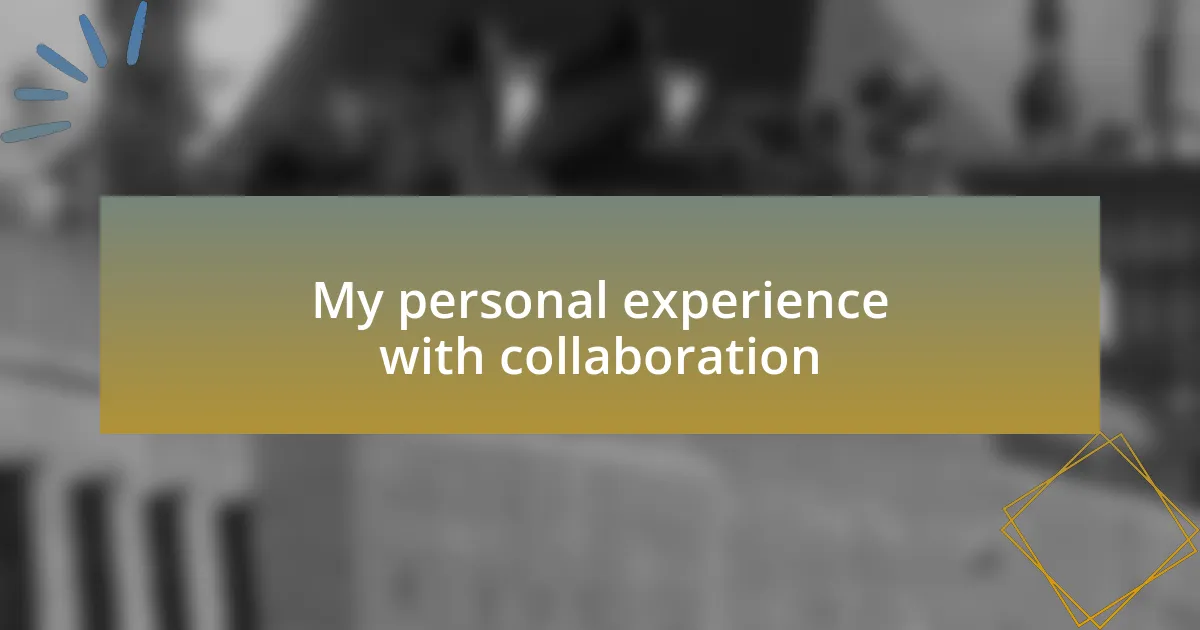Key takeaways:
- Collaboration in music awards merges diverse genres and artists, fostering creativity and promoting audience connection.
- Different collaboration styles enhance performances and audience engagement, showcasing the importance of flexibility in artistic partnerships.
- Successful collaborations create emotional depth through the blending of contrasting musical styles, as seen in notable partnerships like Taylor Swift and Bon Iver.
- Personal experiences in collaboration highlight the significance of trust, vulnerability, and open communication in developing strong creative relationships.

Understanding collaboration in music awards
Collaboration in music awards often brings diverse artists together, creating a melting pot of creativity. I remember attending a music awards show where a spontaneous duet unfolded on stage, illustrating how collaboration can lead to unexpected artistic magic. Isn’t it fascinating how working together can produce something greater than the sum of their parts?
Different genres intersecting during these events showcases the beauty of collaboration. It’s remarkable to witness a country artist teaming up with a hip-hop rapper—what an unlikely pairing! This blend not only broadens their audience but also fosters a deeper appreciation for each other’s craft. Have you ever found yourself drawn to a genre simply because an artist you love collaborated with someone from a completely different musical background?
The emotional connections formed during these collaborations often resonate with audiences on a profound level. I recall a powerful performance where artists not only sang together but shared heartfelt stories about their journeys. These moments remind us that music is not just about the notes, but the relationships and experiences that inspire it. How do these shared stories enhance your connection to a song or artist?

Importance of collaboration styles
Collaboration styles play a crucial role in shaping the dynamics of music awards. I remember observing how artists adapted their approaches during rehearsals, adjusting their creative processes to fit different musical perspectives. This flexibility not only enhances the quality of the performances but also reflects a commitment to a shared vision, fostering unity among diverse talents.
The significance of collaboration styles can’t be overstated when it comes to audience engagement. For instance, during one particular awards ceremony, I saw how a unique collaboration style transformed a song. By blending various instruments and vocal techniques, the performers created a fresh interpretation that resonated with both new and longtime fans. Isn’t it amazing how this kind of synergy can make a piece of art feel alive and dynamic?
Ultimately, understanding collaboration styles can help artists navigate the complexities of working with others. I often find it rewarding to see artists who embrace different collaboration styles, as it not only expands their own musical repertoire but also fosters a spirit of innovation. How can the willingness to explore diverse collaboration styles lead to breakthroughs that push musical boundaries?

Analyzing successful music collaborations
Analyzing successful music collaborations reveals fascinating insights about how artists can effectively merge their styles. Take the collaboration between Taylor Swift and Bon Iver, for example. Their song “Exile” showcases how blending different genres can create an emotional depth that resonates with listeners. I remember listening to it for the first time and feeling a rush of feelings—it’s like they spoke to the heart of what it means to feel both lost and connected at the same time. How do these contrasting voices come together to evoke such powerful emotions?
Another noteworthy collaboration is the powerhouse duo of Jay-Z and Linkin Park in “Collision Course.” Their ability to seamlessly fuse hip-hop with rock exemplifies how even seemingly disparate styles can forge a new path in music. When I first heard their mashup, I was intrigued by the way their styles complemented each other, creating an entirely new listening experience. It raises the question: what makes a collaboration feel authentic and genuine, even when the artists come from different backgrounds?
Moreover, analyzing how artists handle their interpersonal dynamics during these collaborations is eye-opening. I once witnessed a behind-the-scenes moment where two artists debated song arrangements, each pushing the other to explore their vulnerabilities. It was a testament to the idea that successful collaborations often thrive on open communication and mutual respect. Isn’t it fascinating how these discussions can lead to the creation of something entirely unique and groundbreaking?

My personal experience with collaboration
Collaboration has always been a thrilling journey for me, especially when working on music projects. I recall a time when I teamed up with a few local artists to create a community album. Each session was filled with laughter and intense brainstorming, where we challenged each other’s ideas and pushed our creative boundaries. It taught me that the magic often lies in those moments of friendly debate—how can differing opinions ultimately lead to stronger results?
During another collaboration, I learned the importance of finding a balance between leadership and support. I remember feeling hesitant about my contributions, but my partner’s encouragement empowered me to share my voice. This experience opened my eyes to how essential trust is in collaborative environments. How often do we shy away from fully expressing ourselves because we’re unsure of our worth in a group?
I’ve also discovered that vulnerability can deepen the connection within a collaborative effort. In one project, we shared our personal stories to inspire the music we created. This intimacy forged a bond that resonated deeply in our final piece. It made me wonder—how can exposing our authentic selves enhance creativity in collaboration? I believe those emotional layers add richness that audiences genuinely connect with.